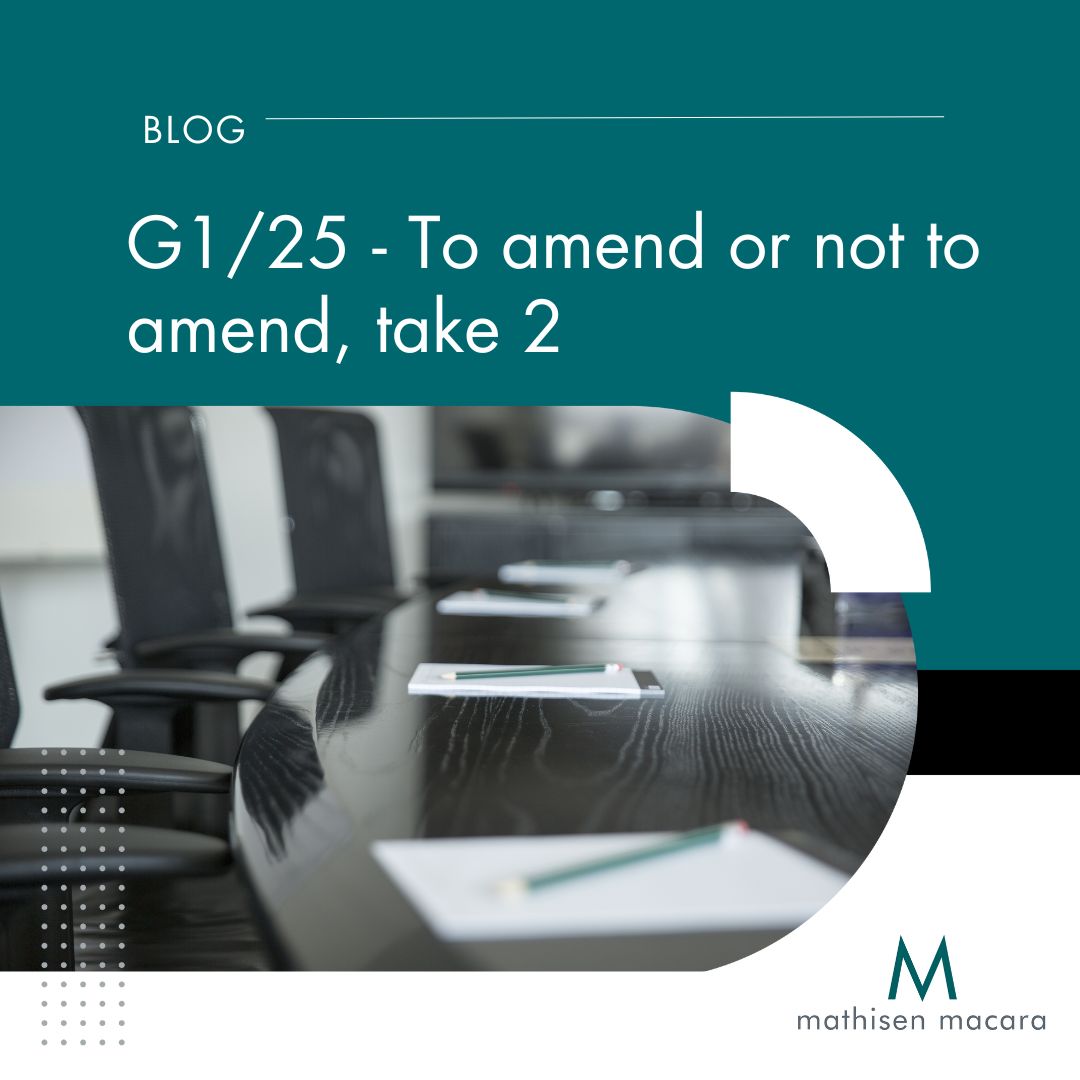G1/25 - To amend or not to amend, take 2
In an earlier article (here), we reported on case T56/21 where it was hoped that questions regarding the necessity to amend the description of a European Patent would finally be raised with the Enlarged Board of Appeal. Alas, the Board of Appeal in T56/21 did not take up the mantel and no questions were asked of the Enlarged Board of Appeal.
Our hopes are thus raised again with newly referred case G1/25. The Enlarged Board has not yet accepted the referral, but if it does, the Board of Appeal in case T697/22 (here) has asked the for the following questions to be considered:
1. If the claims of a European patent are amended during opposition proceedings or opposition-appeal proceedings, and the amendment introduces an inconsistency between the amended claims and the description of the patent, is it necessary, to comply with the requirements of the EPC, to adapt the description to the amended claims so as to remove the inconsistency?
2. If the first question is answered in the affirmative, which requirement(s) of the EPC necessitate(s) such an adaptation?
3.Would the answer to questions 1 and 2 be different if the claims of a European patent application are amended during examination proceedings or examination-appeal proceedings, and the amendment introduces an inconsistency between the amended claims and the description of the patent application?
The European Patent Office has long been somewhat of an outlier amongst other patent offices with its insistence that when the claims of a patent or application are amended, for example during opposition or examination proceedings, the description be brought into line with the amended claims. Often this involves the deletion of subject matter from the description which is no longer consistent with the claims. Failure to amend the description appropriately may result in revocation of the patent, or refusal of the application. Although this has been a long-standing practice, it has always been unclear whether it is has any solid legal foundation.
The Board in T697/22 undertook a detailed analysis of the relevant case law. They found a line of decisions justifying the need for description amendment and another line where no legal basis could be identified. For those cases supporting description amendment, Article 84 EPC (Clarity) was found to be the most common justification cited, either alone or in combination with certain other parts of the EPC. Cases where description amendment was not supported took different views with regard to Article 84 EPC, often seeing no need to remove inconsistencies when the claims were considered to be clear in themselves. The Board in T697/22 also considered case law under the UPC and the Travaux Préparatoires of the EPC but again, found no clear legal basis which would require the description to be amended. The Board concluded that this inconsistent line of case law concerning a fundamental matter of legal importance justified its referral to the Enlarged Board.
It is hoped that the Enlarged Board of Appeal will accept the referral and provide answers the questions referred in G1/25. Clarity on this aspect of EPO practice would be very welcome news to all practitioners, applicants and patentees.
All of our attorneys here at Mathisen & Macara are qualified representatives before the European Patent Office and would be happy to answer any questions you may have about the matters raised in this article, or on any other aspects of European patent practice.
